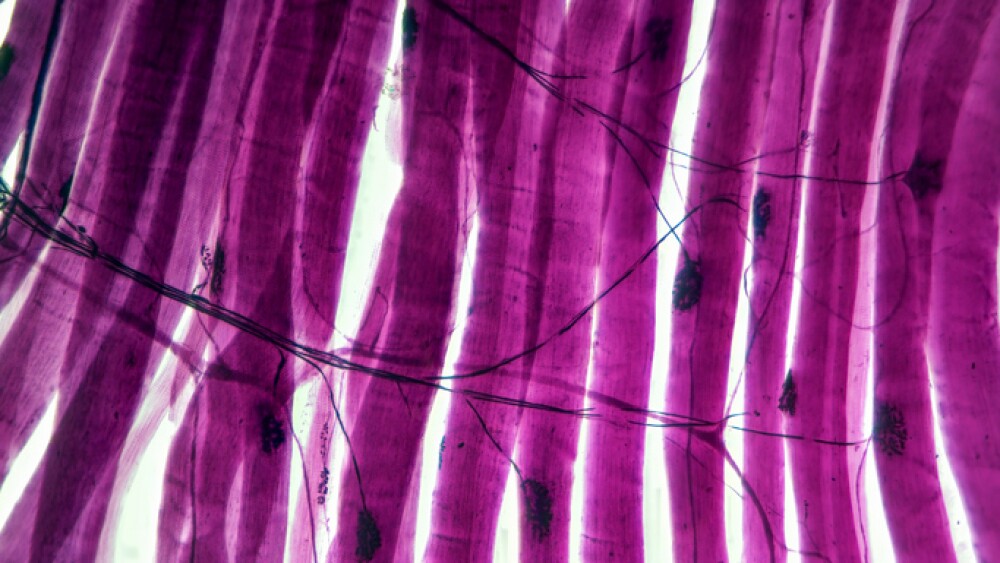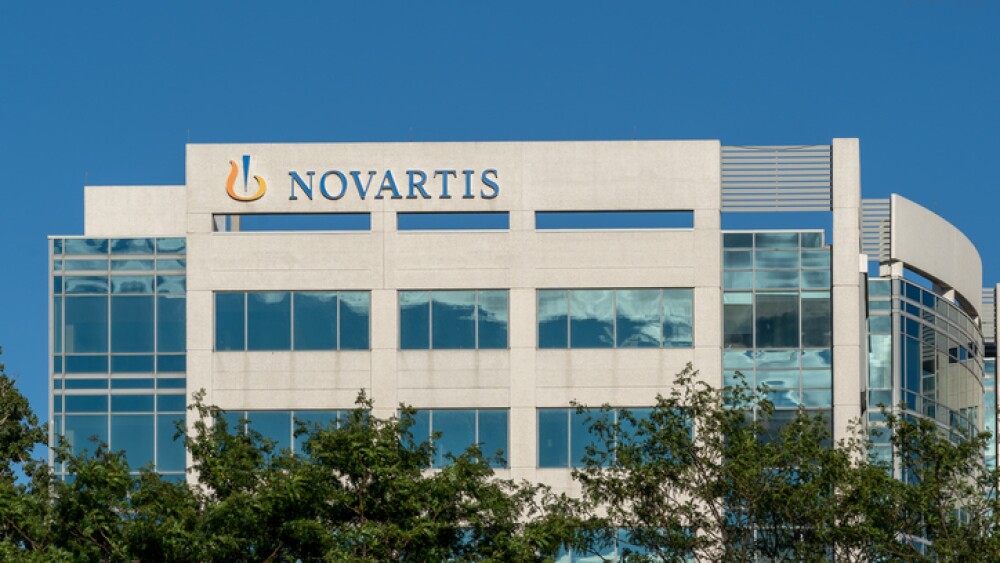Oral Presentation Features Phase 3 Data Showing Rapid Recovery and Durable Benefit of Tanruprubart (formerly ANX005) on Clinically Meaningful Measures across Multiple Stages of GBS
Disease Education Campaign for Healthcare Providers called Move GBS Forward™ (MoveGBSForward.com) Highlights
Life-altering Impact of GBS
BRISBANE, Calif., April 08, 2025 (GLOBE NEWSWIRE) -- Annexon, Inc. (Nasdaq: ANNX), a biopharmaceutical company advancing a late-stage clinical platform of novel therapies for people living with devastating classical complement-mediated neuroinflammatory diseases of the body, brain, and eye, today presented data for its late-stage targeted therapy for GBS and showcased new disease education activities at the AAN Annual Meeting taking place April 5–9, 2025, in San Diego, California. An oral presentation today during the “Clinical Trials Plenary” session featured results of the tanruprubart (formerly ANX005) Phase 3 placebo-controlled trial reinforcing its rapid and durable clinical benefits for patients with GBS. A replay of the session is available to AAN registrants.
GBS is a neuromuscular emergency that affects at least 150,000 people worldwide each year, with no FDA-approved therapies. The rare autoimmune disease is characterized by rapidly progressing and severe weakness that can lead to complete paralysis, often requiring intensive care and mechanical ventilation.
Tanruprubart is a first-in-kind monoclonal antibody designed to block C1q, the initiating molecule of the classical complement cascade. With a single infusion, tanruprubart halts ongoing neuroinflammation and nerve damage in the acute phase of GBS to improve and expedite overall recovery.
“After decades without any advancement in treatment or care, there is an urgent need for therapies that work quickly and effectively to treat GBS. Tanruprubart is an exciting and novel therapy that has shown a rapid and durable biological effect that shuts down neuroinflammation and nerve damage, potentially stopping the disease in its tracks,” said Jeff Allen, M.D., Professor of Neurology, University of Minnesota. “The results of this Phase 3 placebo-controlled study, combined with a real-world study of GBS patients treated with standard therapies underscores the benefits of rapidly blocking neuroinflammation. Tanruprubart has the potential to help patients get better faster and ultimately reach a better state of health than with existing therapies or without treatment, while significantly reducing the burden of care.”
First Placebo-Controlled Phase 3 Trial for GBS Presented in AAN Oral Presentation
In the Phase 3 pivotal trial of 241 patients, tanruprubart met the primary endpoint with consistent outcomes and rapid, more complete functional recovery versus placebo across multiple time points and clinical efficacy measures. The primary endpoint, GBS-Disability Scale (DS), showed that after a single infusion of tanruprubart at 30 mg/kg dose, patients had a statistically significant 2.4-fold higher likelihood of being in a better state of health than placebo at Week 8 (p=0.0058).
Highlights from the oral presentation at AAN include:
New efficacy findings consistently demonstrated rapid recovery and durable benefits of tanruprubart across muscle strength, mobility and disability measures:
At Week 1, treated patients rapidly gained motor function and were 14-fold more likely to perform the Timed Up and Go (TUG) test, a standardized measure of mobility, balance and lower limb capacity
At Week 1, treated patients rapidly gained motor ability and showed more than a 2-point improvement on the Overall Neuropathy Limitation Scale (ONLS), a tool used to assess limitations in everyday activities of the upper and lower limbs
New efficacy findings at Week 26 also demonstrated that the benefit of tanruprubart was durable, with twice the number of treated patients having no limitations on the ONLS compared to placebo
- The new findings build upon previously reported Phase 3 trial results that showed an improvement in the primary endpoint of GBS-DS at Week 8, as well as that twice the number of patients treated with tanruprubart fully recovered to normal (GBS-DS = 0) at Week 26, compared to placebo
Treatment with tanruprubart enabled patients to walk independently and be off ventilation (for those requiring it) approximately a month earlier
Patients treated with tanruprubart also spent approximately a week less time in intensive care
- Tanruprubart was well tolerated, with no new safety signals or off-target effects
Results of the Phase 3 trial are reinforced by a Real World Evidence (RWE) study that matched tanruprubart-treated patients from the pivotal Phase 3 study with a Western world patient population treated with current standards of care, intravenous immunoglobulin (IVIg) or plasma exchange (PE). In the RWE study, tanruprubart showed a rapid increase in muscle strength with more complete recovery over IVIg or PE, consistent with benefits shown in the Phase 3 trial. The RWE study is planned for presentation at upcoming conferences.
Disease Education Campaign Aims to Move Understanding of GBS Forward
Annexon also announced a new education campaign for healthcare professionals called Move GBS Forward™, which is designed to advance awareness and understanding of the sudden and long-term impact of GBS to encourage prompt diagnosis and care. Featuring the striking image of a patient frozen in ice with the header “Guillain-Barré Syndrome can trap your patients for a lifetime,” the campaign draws attention to the life-altering physical and mental consequences of GBS. The campaign website address is MoveGBSForward.com.
“As a rare disease, GBS is often misunderstood and misdiagnosed contributing to the trauma that patients suffer as they experience the severe weakness and acute paralysis caused by nerve damage,” said Lisa Butler, President and CEO at the GBS/CIDP Foundation International. “This new education campaign reflects the patient experience and feelings of being trapped. It will help get GBS on the map for many more healthcare providers, so that the GBS community can take a step forward towards a future where patients may have a quicker recovery and better outcomes.”
Additionally, Annexon supported a symposium at AAN titled “Advancing GBS Care: Latest Insights into the role of classical complement pathway in GBS” where experts discussed the current state of patient care and need for new targeted treatments.
About Guillain-Barré Syndrome
GBS is a rare neuromuscular emergency resulting from an acute autoantibody and classical complement-mediated attack on peripheral nerves that generally occurs post-infection in otherwise healthy persons. It is an acute, rapidly progressive disease with a narrow timeframe for therapeutic intervention. GBS results in the hospitalization of more than 22,000 people annually in the U.S. and Europe. The peripheral nerve damage progresses rapidly, causing acute neuromuscular paralysis that can lead to significant morbidity, disability and mortality. Currently, there are no approved treatments for GBS in the United States. The long-term disease burden associated with GBS has led to a multi-billion-dollar annual economic cost to the U.S. healthcare system alone. More information about the impact of GBS is available at MoveGBSForward.com.
About Annexon
Annexon Biosciences (Nasdaq: ANNX) is developing therapeutics that stop classical complement-driven neurodegeneration as first-in-kind treatments for millions of people living with serious neuroinflammatory diseases of the body, brain and eye. Our novel scientific approach focuses on C1q, the initiating molecule of classical complement’s potent inflammatory pathway that when misdirected can lead to tissue damage and loss. By targeting C1q, our immunotherapies are designed to stop this neuroinflammatory cascade in disease before it starts. Our pipeline spans three diverse therapeutic areas – autoimmune, neurodegenerative and ophthalmic diseases – and includes targeted investigational drug candidates designed to address the unmet needs of over 8 million people worldwide. Annexon’s mission is to deliver game-changing therapies to patients so that they can live their best lives. To learn more visit annexonbio.com.
Forward Looking Statements
This press release contains forward-looking statements within the meaning of Section 27A of the Securities Act of 1933, as amended, and Section 21E of the Securities Exchange Act of 1934, as amended. In some cases, you can identify forward-looking statements by terminology such as “aim,” “anticipate,” “assume,” “contemplate,” “continue,” “could,” “design,” “due,” “estimate,” “expect,” “goal,” “intend,” “may,” “objective,” “plan,” “positioned,” “potential,” “predict,” “seek,” “should,” “target,” “will,” “would” and other similar expressions that are predictions of or indicate future events and future trends, or the negative of these terms or other comparable terminology. All statements other than statements of historical facts contained in this press release are forward-looking statements. These forward-looking statements include, but are not limited to, statements about: the ability of ANX005 to block C1q activity within a single infusion; the potential therapeutic benefit of ANX005, if approved, compared to IVIg/plasma exchange or existing therapies; the planned presentation of RWE at upcoming conferences; the ability to translate the results of the RWE study to a broad population of GBS patients; the impacts of the new education campaign (Move GBS Forward™); the potential benefits from treatment with anti-C1q therapy; and continuing advancement of the company’s portfolio. Forward-looking statements are not guarantees of future performance and are subject to risks and uncertainties that could cause actual results and events to differ materially from those anticipated, including, but not limited to, risks and uncertainties related to: the company’s history of net operating losses; the company’s ability to obtain necessary capital to fund its clinical programs; the early stages of clinical development of the company’s product candidates; the effects of public health crises on the company’s clinical programs and business operations; the company’s ability to obtain regulatory approval of and successfully commercialize its product candidates; any undesirable side effects or other properties of the company’s product candidates; the company’s reliance on third-party suppliers and manufacturers; the outcomes of any future collaboration agreements; and the company’s ability to adequately maintain intellectual property rights for its product candidates. These and other risks are described in greater detail under the section titled “Risk Factors” contained in the company’s Annual Report on Form 10-K and Quarterly Reports on Form 10-Q and the company’s other filings with the SEC. Any forward-looking statements that the company makes in this press release are made pursuant to the Private Securities Litigation Reform Act of 1995, as amended, and speak only as of the date of this press release. Except as required by law, the company undertakes no obligation to publicly update any forward-looking statements, whether as a result of new information, future events or otherwise.
Investor Contact:
Joyce Allaire
LifeSci Advisors
jallaire@lifesciadvisors.com
Media Contact:
Sheryl Seapy
Real Chemistry
949-903-4750
sseapy@realchemistry.com





